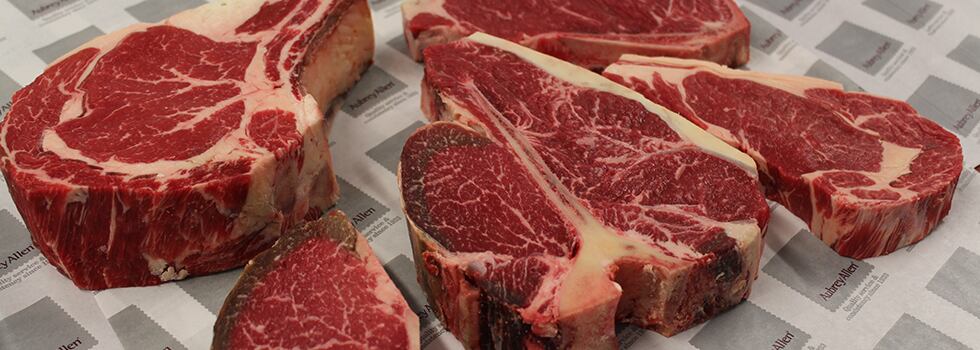The pandemic has brought chefs and butchers closer together than ever before. Here, two chef-butcher duos discuss how they work together to get quality grass-fed Irish beef onto the plate
One would be hard pushed to find a better ambassador for Irish beef than Anna Haugh. She’s got a killer cooking CV that includes stints with Shane Osborn, Phil Howard and Gordon Ramsay and is blessed with an infectious enthusiasm for anything related to good food. She’s Irish too - a native Dubliner, in fact - but she’s clear that her heritage did not factor into her decision to work with Bord Bia, the body responsible for promoting Irish food.
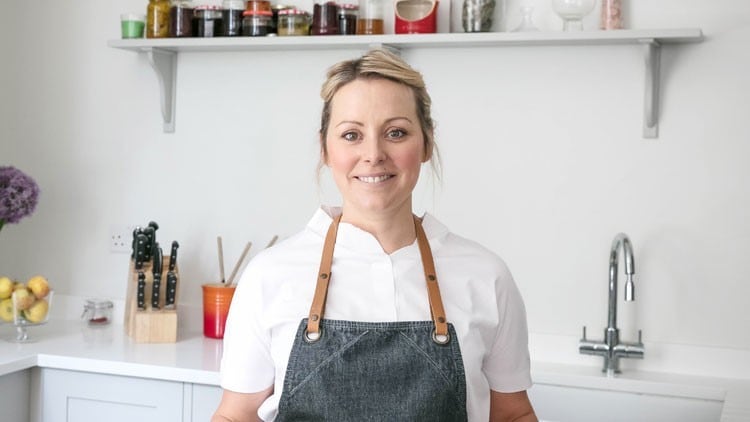
“I don’t use Irish beef because I’m Irish. I use it because I think it’s fantastic,” says Haugh, who struck out on her own last year with the opening of Myrtle, a Chelsea restaurant that celebrates her own roots while simultaneously honouring legendary Irish chef Myrtle Allen.
“I’m not saying it’s the one and only,” says Haugh “there’s a lot of fantastic beef out there, but Ireland is perfectly suited for rearing cattle”. Haugh’s beef comes from a small farm in The Burren - a region in Country Clare, south west Ireland - that’s renowned for quality food production, beef in particular. She has visited the area several times and paints a vivid picture of its unique terroir.
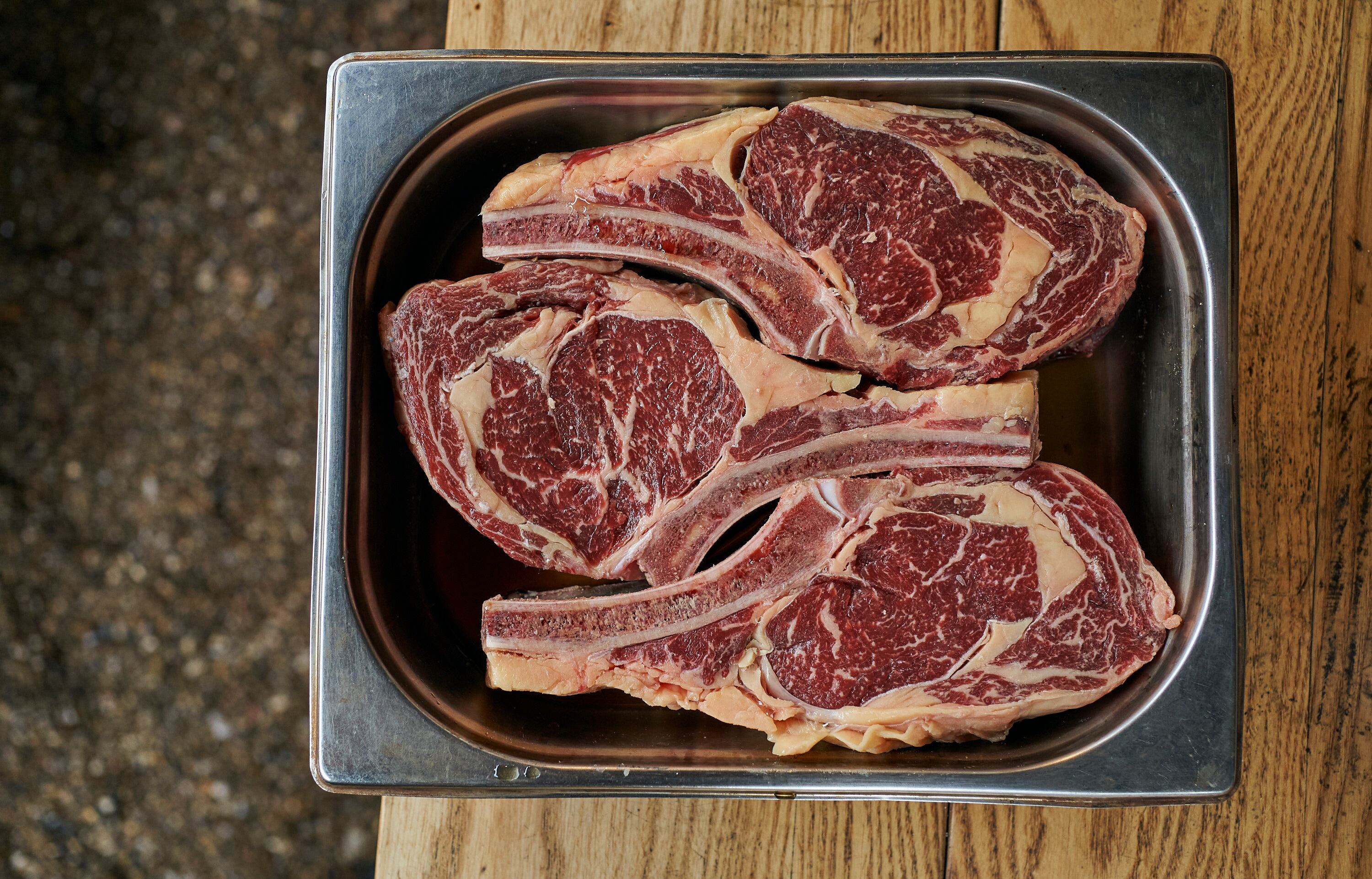
“It’s a magical place. To walk through the fields in which the animals graze is an experience in itself,” she says. Intermixed with the grass are clover and wild herbs, which Haugh says makes for a healthier and more flavourful product.
“You can taste it on the plate. You can also tell they’re animals that have been looked after. The farmers care for them using practices that have been handed down from generation to generation… that’s important to me. Being a chef is not just about the bottom line. It’s important to support people that are doing things properly.”
Irish grass-fed beef is used in Haugh’s signature dish, roasted fillet of beef with boxty, an Irish potato dumpling that involves both raw and cooked potato that’s generously stuffed with braised beef.
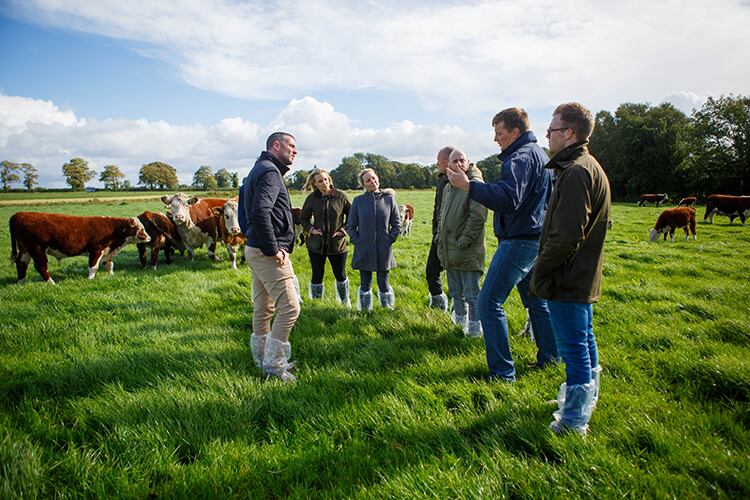
“We give the braise a lot of love. We cook it for about five hours, break it up and then cook it some more with red wine and loads of vegetables. We nearly always use beef cheek alongside another gelatinous cut like chuck or shin. To be honest I take what I can get when it comes The Burren beef. Once the farm slaughters the animal you grab what you can get.”
Helping Haugh to secure her fair share of the beef is Simon Smith, director of client services at butcher Aubrey Allen who are based in Coventry and are an award-winning catering butcher who also hold a royal warrant and supply high-end restaurants including Raymond Blanc and Heston Blumenthal. “We exchange a lot of texts and I often call his team late at night to see what I can get my hands on. It’s a great company. They listen and they know their product. It’s vital to have a good relationship with your suppliers. After all, 50% of how your food tastes is down to the quality of the supply.”
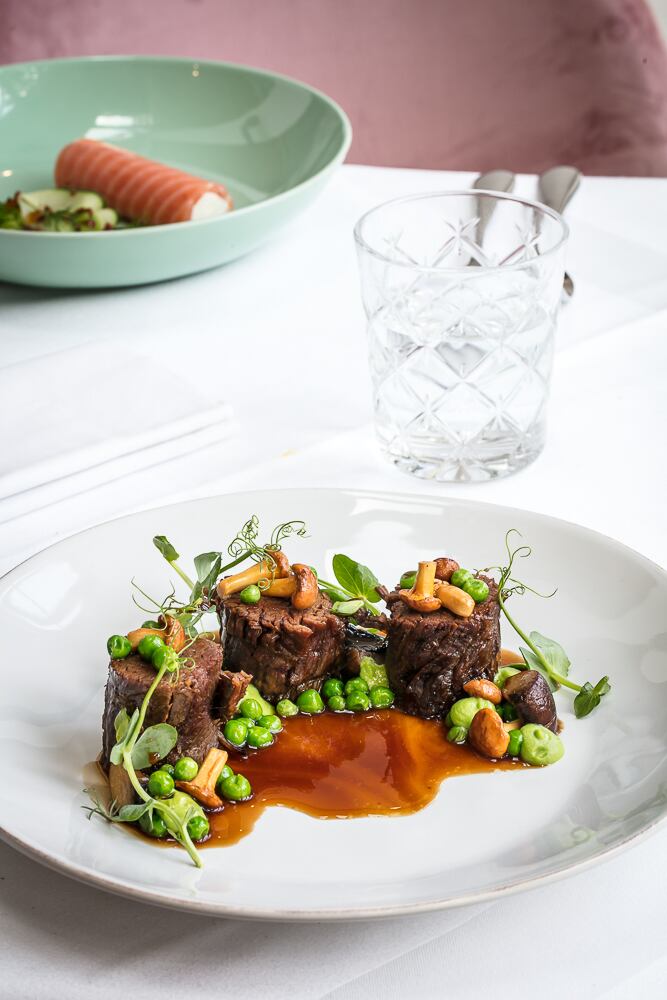
The signature dish at Myrtle is a rich man-poor man affair, combining a premium cut with a more affordable one. “You can cook the food you want if you’re prepared to meet customers halfway. Most customers expect a beef dish to involve a rare piece of meat,” Haugh explains.
Smith has worked closely with Haugh to identify cuts at the thinner end of the fillet. “Most chefs are after the larger centre cuts from the fillet, so these are a little more affordable and allow Anna to hit the price point she needs to,” he says. “We’ve worked together on many different dishes and our partnership is to advise on the best muscle and specification for the enjoyment of the consumer.”
Smith says that the Coronavirus crisis has highlighted that the supply chain is not a tap you can easily turn on and off. “Good chefs understand that there are livelihoods behind it. We at Aubrey Allen have always put the customer at the heart of what we do but this year has brought chefs and suppliers even closer together, being open and fully stocked has certainly helped our chefs.”
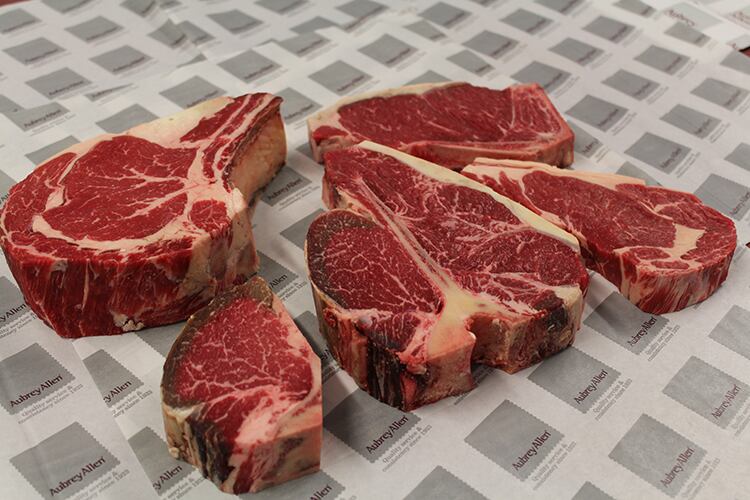
Boxing clever
If ever there was a year to be between restaurant projects, then 2020 was it. John Chantarasak - the half-British-half-Thai chef behind itinerant restaurant concept AngloThai - has had a better year than many in the business, running a number of pop-ups and teaming up with his butcher HG Walter to greatly extend his reach with meal kits.
First up was the AngloThai Hot Dog kit - which featured sausages spiked with red curry paste, Asian herbs and toasted dry spices in the mould of Northern Thailand’s famed sai ua - but Chantarasak’s second kit has upped the ante somewhat.
The chef - who worked for some of London’s most highly-regarded new wave Thai restaurants prior to launching AngloThai - has worked with both HG Walter and Ireland’s Bord Bia to create a banquet box that features a 950g grass-fed Irish T-bone steak, aged for 35-days in HG Walter’s salt chambers.
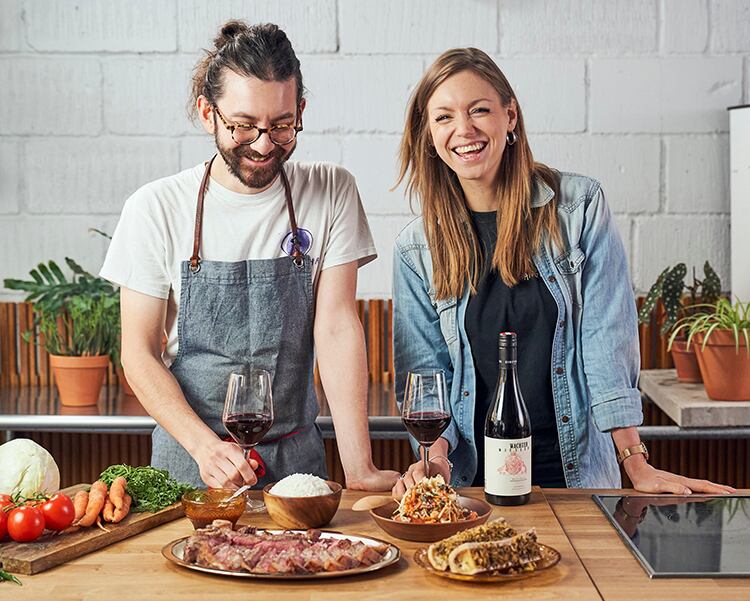
It’s flanked by two lengths of beef bone marrow cut lengthways to resemble little troughs that are to be topped with a beef fat umami crumb; tamarind and roasted chilli jaew dipping sauce; som tam salad vegetables; som tam dressing; and a bottle of Austrian natural wine made with the increasingly fashionable Blaufränkisch grape.
A far cry from a tepid pad Thai and a couple of tinnies, the £100 box is emblematic of Chantarasak’s progressive approach to the country’s cuisine. “I want to showcase great produce and I also want to push against the idea that Asian food should always be cheap,” he says. “The idea of AngloThai is to cook using amazing ingredients and a largely Western mentality without losing sight of the cuisine’s origins.”
Chantarasak was introduced to Irish beef by HG Walter’s managing director Adam Heanen, who runs the business with his siblings. “I was aware that Adam was supplying it to some of his top-end customers (the company’s clients include Phil Howard and The River Café). That was enough to get me interested. Adam arranged for a sample, and it was indeed an amazing product.”
The main thing, Chantarasak says, is the quality of the fat and how it is distributed through the meat. “You can tell it has been reared slowly. That makes for what I can only describe as a really beefy flavour. That’s especially important for my cooking as a lot of my dishes have strong flavours.”
“Another important attribute is that it doesn’t seem to have excess water content when you’re cooking with it, so the weight you buy is much closer to the weight you ultimately put on the plate,” he adds.
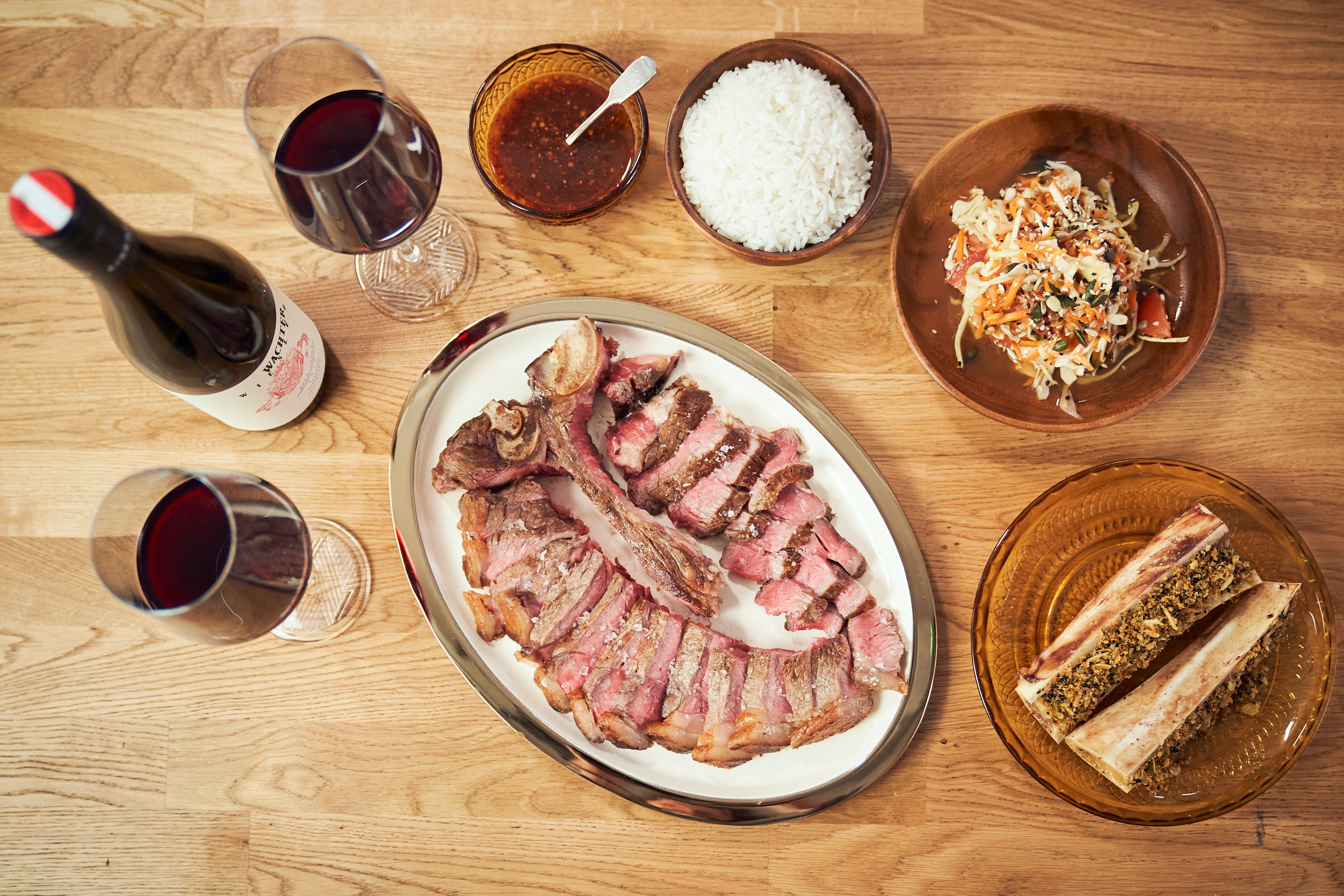
The quality of Irish beef is down to the tireless work of Ireland’s skilled farmers, but the country is also blessed with the perfect climate for grass-fed beef production. “All that rainfall produces amazing grass. That’s where the flavour comes from,” Heanen explains. “At one point Irish beef was a difficult sell because some chefs are a bit stuck in their ways but it’s now something a lot of our clients are asking for, in fact some will only take Irish beef now.”
Chantarasak is now working with Bord Bia to help promote grass-fed Irish beef on these shores. Prior to the link up, Chantarasak gravitated to more affordable braising cuts of beef but his work with Bord Bia has seen him explore more premium options.
“The closure of restaurants meant that demand for some of the more luxurious cuts dropped, so I had access to better produce than before,” he says. “Sirloin and rib-eye have turned out to be my favourites. My viewpoint on them has completely changed - they’re packed full of flavour. Going forward I will make more of an effort to get them on the menu and to get customers to spend that little bit more.”
They may not have been acquainted that long, but Chantarasak and Heanen are already working together very closely. The meal kits are being sent out from HG Walter’s Park Royal London HQ with Chantarasak on site preparing the sauces and marinades and the chef is also consulting on some of the products HG Walter offers in its Palliser Road shop.
“If I was to paint a picture of our ideal customer it would basically be John - he’s passionate and hardworking and he’s a great guy to deal with,” says Heanen. “We’re a family business so we just want to work with nice people that want quality. It sounds cheesy, but with the industry on its knees we all need to pull together to get through it.”
The Insider
Padraig Brennan
Meat, food and beverages director, Bord Bia
Tell us about Bord Bia’s new Grass-Fed Standard and why chefs should be interested in it...
Grass fed has always been Ireland’s production system and this new Grass-Fed Standard means Irish beef is sourced from cattle that enjoy a minimum of 90% grass and grass-based forage, grazing in open pastures for an average of 220 days per year, during their lifetime.
The Grass-Fed Standard for Beef, the world’s first on a national scale, now tracks and verifies the percentage of grass consumed in the diet of Irish beef herds. Ireland has always had a strong reputation for grass-fed beef and over the years grass-fed beef has been the choice of many Michelin Star chefs. Irish grass-fed beef won more medals than any other country in the 2018 and 2019 World Steak Challenge. In the 2019 contest, with competitors from 25 countries including Australia, New Zealand, Uruguay, USA, Canada and Europe, Ireland won a record 75 medals, more than any other competing country, including the World’s Best Fillet.
Teagasc, the Irish state agency providing research, advisory and education in agriculture, horticulture, food and rural development in Ireland, has carried out research and found that grass-fed beef is both visually distinctive and has specific positive taste and nutritional properties.
The findings of the Teagasc study into the different effect of cattle diets show that grass-fed beef has low overall fat levels, it is naturally rich in protein, contains essential amino acids, and has eight essential vitamins and minerals including B12, iron, niacin, B6 and phosphorous. Together, this combination can help to reduce tiredness and support normal function of the immune system, as well as general good health and well-being. Furthermore, the study found grass-fed beef has a pronounced cherry red meat colour and its flavour is often described as ‘complex’, ‘grassy’, ‘rich and juicy’, ‘full flavoured’, ‘succulent’ and as having a true ‘beefy’ flavour.
When it comes to beef, consumers around the world are increasingly looking for natural, high quality products. With the launch of the new independently verified Grass-Fed Standard for beef, Ireland is now uniquely positioned to meet this growing demand and reaffirm its long-standing worldwide reputation of producing delicious tasting award-winning grass-fed beef.
Why is Ireland a good place to rear beef?
With its mild climate and plentiful rainfall, Ireland is naturally suited to sustainable, grass-fed beef farming. A heritage of family farming, passed from generation to generation, combined with lush green fields, clean air and plentiful rain create the perfect environment for beef farming, which converts grass into nutrient-rich, premium quality products. Ireland also has the longest grazing season of all countries in the northern hemisphere, with a yearly grass growth rate that exceeds the European average by more than a third. Green pastures, clean air and plentiful rain are three ingredients that make up the uniquely special taste, tenderness and quality of Ireland’s grass-fed beef.
What tips would you give chefs looking to create interesting beef dishes?
Depending on what type of dish chefs are trying to create we have premium cuts for all cuisines and menus. For example, Anna Haugh chooses the lean and tender grass-fed Irish fillet for her Irish themed menu, at Myrtle in Chelsea, serving roasted beef fillet, with Burren beef stuffed boxty. Over the summer we collaborated with John Chantarasak of AngloThai where he cooked a number of our premium steak cuts over fire to add smoky flavours to the beef, whilst also complementing his Thai inspired BBQ dishes. And most recently, Tom Cenci who is heading up a residency at 26 Grains in Borough is championing offcuts and using the whole carcass, with a rotating innovative menu of beef centric dishes championing more of the unsung cuts such as Irish beef cheek, which when cooked slowly, becomes terrifically tender and just melts in the mouth, or feather blade which is the perfect cut for braising at this time of the year.
These are tough times, how can chefs ensure they provide good value to customers and make a decent margin (eg. slow cooking cuts, less obvious cuts)?
It’s important to remember that good value has a number of different meanings to customers. The first will be taste, once a dish has met or exceeded expectations, this will have a direct impact on how a customer perceived the value of the meal. Nothing new to chefs but sourcing and cooking with the best tasting ingredients is a must, especially in such a highly competitive marketplace.
When a customer is dining out, they are putting their trust with the chef and the establishment that they’re using top quality ingredients. Many operators are missing an opportunity to reassure their customers of the quality of their ingredients by not having the provenance message on menu. Furthermore, quality cues such as grass fed can further demonstrate the premium attributes of the ingredients of the dish. Especially when it comes to the centre of the plate with the key ingredient such as beef.
The beauty of beef is how versatile and how many cuts there are in the carcass. Some of the less popular cuts can give a real depth of flavour and taste once cooked appropriately. Onglet, is an extremely tasty cost-effective cut, however the issue can be the awareness from customers. Likewise, featherblade or flat iron can be a great cut to be used as part of your frying/grilling steak range. Slow cooked shin or chuck is full of rich, deep, earthy flavour and cheaper than many cuts in the carcass. To further reassure your customers, mentioning the provenance and quality cues such as grass-fed Irish beef will lead to a win/win.

